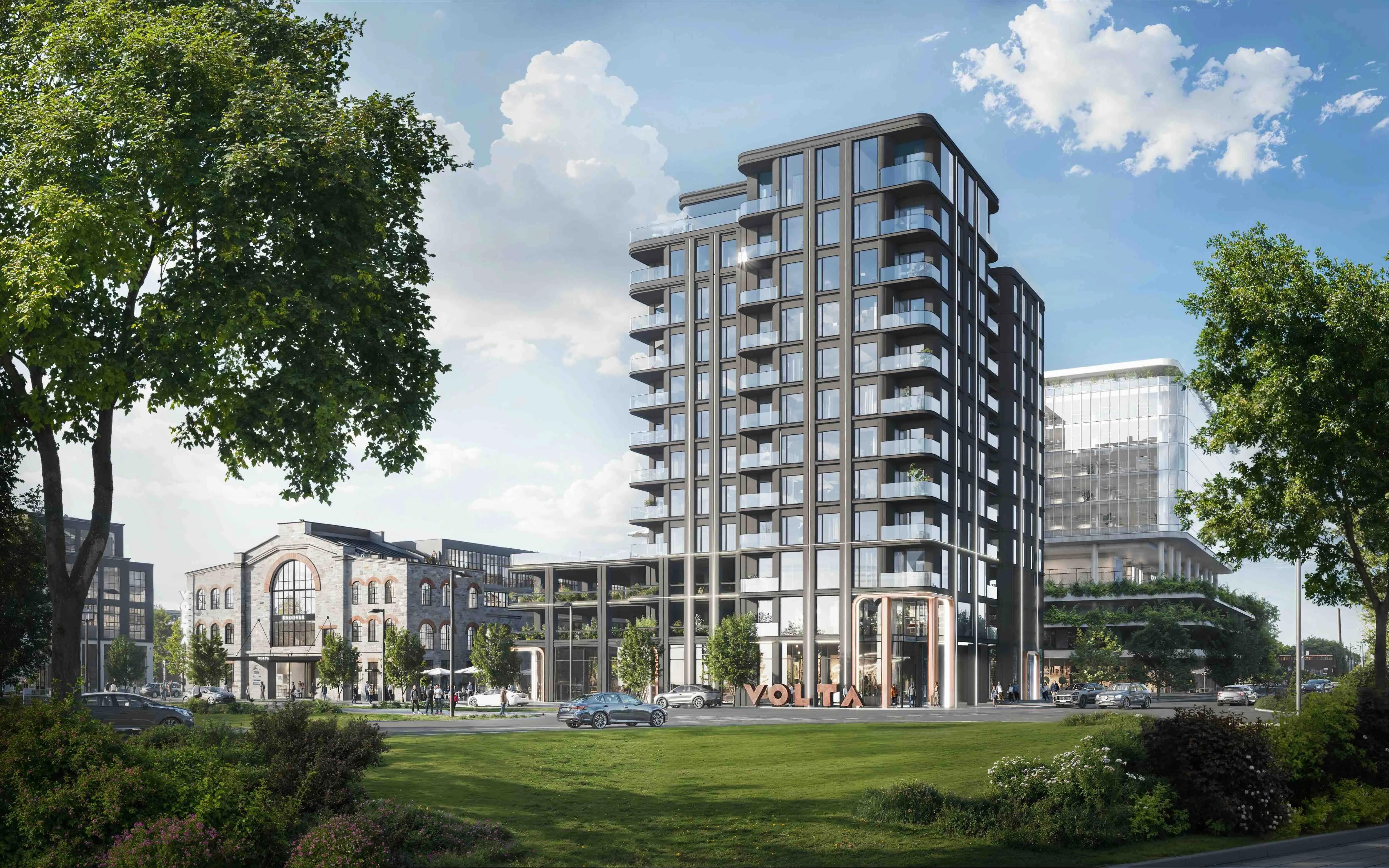Lawyers Explain: How to Legalize an Unauthorized Outbuilding Instead of Demolishing It?

Local governments can use aerial photographs from the Land Board to identify various outbuildings on properties – sheds, saunas, or garages – which may have been erected without consulting the local government. In this context, the question may arise whether a particular building may have been constructed in violation of the conditions of the detailed plan.
For the owner, the need to legalize an outbuilding often emerges unexpectedly and as an unpleasant surprise – for example, when it has been erected by a previous owner. An illegally constructed building can cause multiple problems and hinder the use and disposal of the property. Even if the outbuilding was erected by the previous owner, the local government may require the new owner to legalize it, impose a penalty payment, or punish it with a fine. Lawyers Sandra Kaas and Villy Lopman from law firm RASK explain what options exist for legalizing such outbuildings.
There is no completely rule-free construction activity
An outbuilding erected as a result of free construction activity can be considered lawful only if it complies with applicable restrictions and plans. As a rule, a property owner can assume that if an outbuilding erected next to a residential building remains below 20 m² of built-up area and below five meters in height, the erection of the building is permitted freely, i.e., without restrictions.
However, there is no completely rule-free construction activity. Even such construction must comply with applicable law and take into account restrictions on the property and requirements arising from plans. It is important to understand that even outdated but still valid detailed plans must be followed – even if their requirements may be behind the times.
The maximum number of buildings specified in the plan may not only cover buildings subject to building permits
A common but mistaken understanding is that planning regulates only the construction of buildings subject to building permits and buildings falling under free construction activity are unaffected by restrictions. In reality, however, this depends on the practice of each municipality and the specific plan applicable to each property.
When erecting an outbuilding, the valid detailed plan must be followed regardless of whether it is an outbuilding subject to a building permit or not. Planning restrictions – such as the maximum number of buildings on a plot, building area, and the location of buildings in relation to the plot – may apply equally to all buildings. However, different municipalities and plans may apply different approaches.
In the sense of the Building Code, an outbuilding is also a building – it is an interior space formed by a roof and other enclosing walls. The Supreme Court has explained that if a detailed plan provides for a maximum of one building on a plot, this restriction applies to all buildings, regardless of their permit requirements, unless the plan explicitly provides otherwise. Therefore, even an outbuilding erected within the framework of free construction activity may conflict with the detailed plan if, for example, the maximum number of buildings permitted on the plot is exceeded.
There is often not just one correct solution for legalization, but several
In practice, local governments may require changes to the valid detailed plan for legalizing an outbuilding in such a situation, which essentially means drawing up a new detailed plan. However, this is not the only possible path, as there may be simpler solutions for legalization.
The question is whether the deviation from planning requirements is sufficiently significant and extensive so that it is in any case necessary to amend the existing plan to legalize the outbuilding. A significant deviation is considered, for example, a situation where the built-up area of the erected building is approximately 50% larger than permitted by the plan. On the other hand, erecting two buildings instead of one may not always be such a significant deviation that would require amending the plan. Such a requirement may be disproportionate for the property owner if the outbuilding could be legalized more easily, for example, on the basis of a use declaration.
If the area of the residential building and outbuilding does not exceed what is permitted by the plan, the outbuilding is located in the building area and does not significantly infringe the rights of neighbors, it may be possible to legalize the outbuilding on the basis of a use declaration without the need to amend the detailed plan beforehand. If necessary, the municipality can impose additional conditions on the use declaration – for example, by requiring payment of a one-time compensation to a neighbor – if legalizing the outbuilding without additional conditions would cause excessive infringement of the neighbors' rights.
Is it always correct to proceed to amend the detailed plan in case of any deviation?
The Supreme Court has emphasized that in a situation where a property owner wishes to have greater building rights than permitted by the valid detailed plan, the plan should not be invalidated lightly. This is especially true in cases where the only purpose of invalidating the plan is to legalize previous illegal construction activity.
A plan should not be treated as simply a modifiable document or handled solely as a means serving the interests of property owners. A detailed plan is a social agreement: on the one hand, it gives a person the right to develop their own property, but on the other hand, it protects the interests of neighbors and the community by ensuring that construction activities are carried out under agreed conditions. If plans are amended solely retrospectively to legalize illegal structures or to increase one person's building rights, this undermines the substance and reliability of the agreement as a whole.
The requirement to draw up a new detailed plan to legalize previous construction activity may be justified primarily when the deviation from the valid detailed plan is significant and clearly affects the interests of neighbors. If it is an insignificant deviation that does not affect the interests of others, the illegal outbuilding should be legalized on the basis of a use permit or use declaration – depending on the building's parameters – without the need to invalidate the detailed plan and draw up a new one in its place.
If many owners in the area have erected outbuildings in disregard of the conditions of the valid plan, it is worth looking at the situation more broadly. Such a situation may indicate that the valid detailed plan no longer meets the actual needs of residents. In such a case, it would be worth analyzing whether a new detailed plan should be drawn up that would meet residents' expectations and actual space use.
In some cases, it is also possible to clarify the valid detailed plan with design conditions. However, it must be emphasized that design conditions cannot be used to legalize an already completed building – they can be used to determine some of the requirements for a building to be erected only in the future, not to legalize construction activity that has already taken place.
Demolition is the last resort
If it is an illegal outbuilding, the local government must decide whether it is possible to legalize the building or if it should be demolished. If a violation of building standards cannot be remedied by other measures, consideration should be given to whether to demolish the outbuilding, taking into account both the property owner's and public interests.
In practice, cases have occurred where an outbuilding was erected closer than four meters to a neighbor's property boundary. According to court practice, such a violation alone is not a sufficient basis for demolition – it has been considered disproportionate. A demolition order should not be issued merely because a building was erected unlawfully, but in addition, there must be compelling reasons.
One such reason may be a situation where legalization of the outbuilding will not be possible in the future. The Supreme Court has explained that if legalization is prevented by a valid general plan, legalization of the building is impossible primarily when attempts to amend the general plan have failed in the relevant proceedings or it is foreseeable that its amendment is not legally possible.
Practical advice for property owners
1. Analyze the detailed plan before building – also in the case of outbuildings
Before beginning construction work, you must certainly familiarize yourself with the plans and restrictions applicable to the property and consult with the local government. The plan may impose restrictions on the erection of smaller outbuildings – such as sheds and saunas – even if it is free construction activity. To avoid problems, it is important to find out all requirements arising from applicable plans early. In any case, it is wise to communicate with the municipality, as understanding the plan becomes significantly easier this way.
2. Important when buying real estate: verification of the legality of existing buildings
Before purchasing a property, you should ensure that all buildings on it have been constructed lawfully and comply with applicable building and planning requirements. If there are illegal buildings on the property, the responsibility for legalizing them remains with the future buyer. Therefore, it is wise to ask the seller to provide all documents for existing buildings: building and use permits or declarations, designs, construction documents, and other relevant information about the building and its construction. This information may prove necessary later, for example, when renovating, expanding, or retrospectively legalizing a building.
In conclusion, there is no completely rule-free construction activity and this should be kept in mind when erecting various outbuildings. Municipalities must assess each case individually and legalization options depend on both the building's parameters and the conditions of the valid plan. When building or purchasing real estate, it is always worth clarifying beforehand what restrictions apply and consulting with the local government to avoid later disputes, additional costs, or in extreme cases, demolition.




